Setting the Scene
Growing up in McComb, Miss., David Ray, now 31, learned nothing about the dramatic and violent events of the Civil Rights Movement in his hometown—once called the "bombing capital of the world"—until he overheard whispers about it at a relative's funeral in 2010. He was compelled to learn the real history of the era. This story of Brenda Travis and other brave teens begins after the murder of Herbert Lee in nearby Amite County for his civil-rights activity, which along with the recent appearance of the Freedom Riders helped inspire two students at the all-black Burglund High School to try to integrate the Greyhound bus station waiting room in downtown McComb. The story picks up at the point when the students seek to return to class after spending a month in Pike County Jail for the effort. At this point, the school district must decide how to deal with the young activists' subversive behavior.
The aging, white-haired tyrant towered over the realm of academia in McComb, and looked every inch the stern disciplinarian. A former special agent with the FBI, Superintendent Robert S. Simpson's suits were always immaculate, with the knot in his tie perfectly situated. Even the glare cast through those thick, black-framed glasses could make a troublesome adolescent's blood run cold.
It probably would have crushed Simpson's inflated ego had he known that the bawdier white kids at McComb High School referred to him as "Rat Shit" Simpson, but within his sphere of influence, he was the judge, jury and executioner—and a go-to hatchet man for the Citizens Council.
As superintendent, Simpson had aggressively toed the line for the status quo, fighting to defy the seven-year-old dictums of Brown v. Topeka Board of Education.
The Camellia City's schools would not integrate on his watch, and black teens at the all-black Burglund High School would not get away with such behavior.
Because of Simpson's unyielding conservatism, the Duke University and Millsaps College-trained educator had risen to vice president of the Mississippi Association of School Superintendents. In accordance with the Subversive Activities Control Act of 1950, he had long required all his teachers to sign a loyalty oath vowing to refrain from "subversive" activity, and additionally provided the Mississippi Sovereignty Commission with lists of faculty names.
The actions of two incorrigible Burglund High students, who possessed the fortitude to try to integrate the Greyhound station, had the potential to spark major unrest in Pike County. Simpson was keenly aware of this threat. From City Hall, his masters sent word that he make an example of Brenda Travis, 16, and Isaac Lewis, 20, when they returned to school following a month of singing freedom songs while incarcerated at the Pike County Jail in nearby Magnolia. Simpson followed those orders to the letter.
Back to School
On Oct. 4, 1961, Brenda Travis met with black Principal Commodore Dewey "C.D." Higgins to learn her fate. Travis faced Higgins alone, she says—because her mother, Icie Travis, had to work. The mother of seven was a cook at the Fernwood Textile Company and could not afford time off.
Higgins told Travis that she would not be allowed back in class and expelled her for the remainder of the school year.
"Why?" Travis asked Higgins.
He told her it was because Superintendent Simpson told him he had to expel her.
"You mean to tell me you're going to let that white man tell you what to do with a colored student?" she asked her elder.
"I'm doing my job," Higgins answered.
It is doubtful that Mr. Higgins lost much sleep over the matter, though. Black principals in Mississippi were often all-powerful men within their communities, and things were no different in McComb.
As Taylor Branch wrote in his book "Parting the Waters," the principals at Mississippi's all-black high schools controlled "scarce, precious commodities," including diplomas and college recommendations. Limited teaching positions were filled based solely on Higgins' decree. In essence, the school had become his personal economic fiefdom. As long as he suppressed racial volatility within the school, the school board allowed him to collect ticket receipts from sporting events and other school functions.
Some day, Burglund High might even be renamed after him—perhaps to C.D. Higgins Middle School (as it's called now).
A Courageous Act
After Travis left the principal's office, she ran into a fellow schoolmate who asked her, "What happened?"
"I was expelled."
"Come on, follow me to the gym," he told her.
She didn't know then that it was assembly time—and that other students were ready to make a statement on her behalf.
Word spread quickly in the assembly that Higgins was expelling Travis and Isaac.
Voices in the bleachers suddenly began to murmur with discontent from students who were ready to respond if this happened, with help of their SNCC advisers. No one could dispute that Lewis and Travis had contributed more to the local fight for civil equality than any Burglund faculty member or pious administrator, and scores of students believed that the pair's valiant gesture deserved recognition, not punishment, and this was the last straw for many of the young people in the room.
Senior Class President Jerome Byrd demanded an explanation, but the stoic Principal Higgins refused to respond. Several upperclassmen followed Byrd's lead, and commandeered the assembly.
"Hey y'all! Let's walk out of here!" Byrd shouted to fellow students.
With a gripping background of freedom songs in the air, 114 Burglund High School students of various ages rose from the wooden benches, walked through the front door and set off on an exodus from the campus, as their principal lightly wept. Travis was near the front of the march. Their future was now anything but certain. From the school grounds, the children of Jubilee marched under glorious sunshine toward the Masonic Temple on Warren Street.
"Woke up this morning with my mind stayed on freedom...," they sang.
'The Shuffle of Feet'
Organizers Bob Moses and Chuck McDew were hosting a regional SNCC conference on voter-registration techniques when the throng of singing teenagers approached the Burglund Supermarket, a hotbed of organizing on the black side of the tracks. Initially, the pair of northern activists aimed to curb the students' youthful exuberance when they saw what was unfolding. However, SNCC members Marion Barry and Charles Sherrod feverishly urged the children to march to the Pike County Jail in Magnolia, where Travis and Lewis had been held, and they even hatched a dangerous scheme that would have required walking through miles of hostile countryside.
Neither Barry or Sherrod joined the children's march, however.
The wheels of fate began to churn. Moses advised against walking all the way to Magnolia because he knew the inherent risk of violence. Additionally, he feared that the unprecedented protest—the first of its kind in the state since Reconstruction—would alienate older blacks, but as organizer Curtis Hayes recounted later, "the overriding factor was that the students wanted to march."
The blossoming revolutionaries paraded south down Summit Street in a joyous holiday mood, bantering with neighbors and waving at the stunned faces looking out from Eddie J.'s Paradise, the Sixth Century Billiard Hall and the DeSoto Hotel. Many older black residents knew this unrestrained wave of enthusiasm might get out of hand.
Earl Moses—a renowned cobbler who repaired my dad's and uncle's shoes—stepped out of his shop to observe this inconceivable demonstration.
Across the street, Alyene Quin stood befuddled in the doorway of her South of the Border restaurant/tavern, where she fed and encouraged civil-rights workers. (Her home would later be bombed to the ground.) For an instant, she and Earl Moses shared a worried look. Something enormous was afoot, and white people of McComb were psychologically unprepared for what was coming.
Turning west on Georgia Avenue, the march continued beneath the infamous Illinois Central Railroad viaduct that separated black and white McComb and that students had been warned about crossing their entire lives. Suddenly, the freshly initiated activists found themselves in uncharted waters. Never before had such a large group of Negroes, as they were called then, walked together in the streets of West McComb.
Activist Bob Zellner later painted the indelible scene in his book, "The Wrong Side of Murder Creek."
"As we approached the railroad tracks," he wrote, "things began to get quieter until you could hear only the shuffle of feet on dusty gravel. Even the weather, it seemed, began to change as we crossed from 'n*gger town' to the sidewalks of white McComb. The sky seemed darker, and the footfalls were quieter ..."
Students carried cardboard signs stating, "(Herbert) Lee could be me," and "Will you be an Uncle Tom, or will you be a man?" The signs didn't have poles, however, so they couldn't be accused of carrying weapons.
A violent backlash lay just ahead.
A Tsunami of Rebel Yells
Forging ahead, the flustered activists ventured southward down Front Street, past a couple of gambling joints. Puzzled white people stared in disbelief, and some began to spread the word of what was happening. The marching students then snaked back north on South Broadway and slowly moved to the east side of City Hall. An angry, white crowd had already gathered at "the five-points," where Main Street, North and South Broadway, 3rd Street and Delaware Avenue meet.
Violent scenes from Herbert Asbury's book, "The Gangs of New York," come to mind when I imagine the friends and business associates of my grandparents reacting with such hostility to a crowd of children.
Things only got worse near Main Street. One overly zealous frontiersman tried to run his antique truck into the crowd, almost hitting SNCC's Chuck McDew, at the front of the marchers. The man then sprang from the cab with a "pipe wrench," wildly swinging it like a club at McDew, calling him a "black, nappy-headed son of a bitch."
That powerful scene remains vividly imprinted in the minds of protesters like Travis and Jerome Byrd's little sister, Jackie Martin (then Jackie Byrd). After the pipe-wrench incident, the group decided to follow Moses' advice and stop at City Hall rather than go all the way to Magnolia, and in the dark.
Irritated troublemakers from the 3rd Street Barber Shop and Coker's Cafe quickly joined the vicious, seething mob of white adults in the street, by then numbering several hundred. Chains and lead pipes seemed to appear out of thin air. A handful of newspaper photographers were present, and numerous FBI agents stood around Ray Deer's Texaco station half a block south in sweat-stained shirts taking notes.
One white man had decided to march with the children and activists. Bob Zellner, the son of a one-time Alabama Klansman, was the only white field secretary working for SNCC in Mississippi. On this fall day, the bloodthirsty townspeople immediately detected his presence.
Zellner became the primary focus of the mob's hostility, for he represented a traitor, a scalawag, a modern-day Benedict Arnold to these backward Pike Countians.
In the eyes of most McComb residents, a man like Zellner was a total disgrace, but more importantly, he was a real threat to Anglo-Saxon superiority. They knew that without the sympathy and assistance of white southerners, the push for civil equality for blacks would struggle to gain momentum.
The traitor should have known what awaited him. After all, he had been smuggled into town under blankets and the cover of darkness. The young activist had contemplated remaining at the Burglund Supermarket while the march unfolded, but a sudden epiphany struck him.
"What the hell am I talking about?" Zellner thought, as he later recounted in his book. "What about these kids ... what's going to happen to them ... this is Mississippi for Christ's sake ... in 1961 ... these kids are going to be massacred."
When the demonstrators reached the steps of City Hall, the furious mob encircled them. Hundreds of yelling voices merged into a single depraved wail. To show his peaceful intentions, local activist Hollis Watkins, then 18, raised his left hand to the heavens and fell to his knees. Then Isaac Lewis followed suit. More students joined them, and others began reciting the Pater Noster.
"Our Father, who art in heaven ..."
Enough was enough. The piercing shriek of police whistles immediately filled the downtown area. A police officer promptly arrested Watkins, and the livid spectators unleashed their bottled frustrations as police arrested more protesters.
An unidentified, virulent gentleman decked Isaac Lewis, but most locals turned their calamitous attention to Zellner. With each shove or punch, the members of the mob would wait for a reassuring gesture from one of the city officers. Each wink, each nod clearly stated that the 22-year-old white SNCC activist was fair game. Some lawmen even participated.
Zellner clung to a Bible that had been given to him in Burglund. One angry frontiersman went for his throat, and another slugged him in the face. McDew and Moses threw themselves across Zellner's body to shield him from the onslaught. For their compassion, a policeman began to strike them both on the head with his nightstick. The pair was dragged—gashed and bloodied—inside City Hall. Only one marcher now remained to face the armed horde.
While Zellner latched onto the iron railing of the steps, a few assailants feverishly struck at his hands with pipes, baseball bats or whatever was lying around. The Bible fell to the pavement. An enraged individual grabbed him by the ears and tried to gouge out his eyes. A tsunami of approving Rebel yells covered the landscape.
"I watched in great fascination as the larger mob armed itself," Zellner wrote. "They already had pipes and bats and wrenches, and now they were methodically tearing down a brick wall in order to fill their hands with missiles. I heard their screams now as the large mob was pleading with the small mob around me, about 12 or 15 men, to drag me out into the middle of the street."
Their high-pitched shouts began to resemble a dark chorus of banshees, wild with grief and hate. "Bring him here," the murderous frontiersmen demanded. "We'll kill him! Bring him here!"
After releasing the railing to protect his eyes, Zellner was instantly struck to the ground. Enraged townspeople continued to swarm the interloper, and kicked him in the head until he lost consciousness. Only then did the police intervene, pulling Zellner's seemingly lifeless body into the building.
Into the Dungeon
Spies, on assignment for the Mississippi Sovereignty Commission, found Pike County NAACP President Curtis Bryant's notebook later that day. It listed one of the thugs as J. Gordon Roach—a prominent attorney and future circuit-court judge in Pike County. His office was situated right next door to City Hall.
"We managed to get (Moses and Zellner) to jail before any real trouble started," Sheriff Clyde Simmons told a State-Times reporter.
This was not entirely accurate. As sweating FBI agents did nothing to intervene, police removed protesters from the sidewalk and herded them, single file, down the steep, narrow stairs into the bowels of City Hall.
For decades, this notorious 21-by-18-foot bunker had provided the perfect location for keeping abused prisoners tucked away from view.
Hollis Watkins later said that he remembers butane gas seeping into the dungeon as more than 100 protesters pressed together in the tiny cells like sardines.
While the officials working on the ground floor of City Hall feigned interest in maintaining positive race relations, the hatchet men conducting affairs in the dungeon were only interested in maintaining the established social order.
Once and for All
Moments after the initial pandemonium, a half dozen squad cars dispersed from City Hall to Burglund and Baertown. Never had there been such a brazen show of defiance in the piney woods of southwest Mississippi. Taylor Branch described in "Parting the Waters" how the mayor and his selectmen acted forcefully to quell the recent string of uprisings once and for all.
Police raided Curtis Bryant's home and arrested him for a second time in less than a month. In Burglund, police swept through both floors of the supermarket, rounding up newcomer Donald Lloyd Gadson and several other SNCC members. Gadson was a black preacher from Detroit who Sovereignty Commission documents claimed to have participated in the march but somehow had avoided arrest at the scene.
Police arrested Charles Sherrod while he walking around the 600 block of Summit Street. On his person, officers found a printed copy of "Voice of the Jackson Movement," a newssheet entitled "Now It's Up to You," and the phone number to the United States Justice Department.
Only Charles Jones, who had just recently been released from jail following a Tennessee sit-in, avoided detection by disguising himself in a bloodstained butcher's apron and hiding in a corner of the supermarket during the sting. After officers vacated the premises, Jones urgently alerted news outlets of "the first civil rights mass arrest in the history of Mississippi," as Taylor Branch recounted in "Parting the Waters."
Aware of the concern that vigilantes might drag the activists from their cells at any moment, Jones also called African American singer Harry Belafonte to request bond money. Belafonte then contacted the FBI's John Doar in Washington to ask for federal assistance.
From the Dungeon
After police arrested the protesters, they separated them by gender and "crammed (us) like sardines" into the tiny cells, as Travis recalls. In the subterranean cells under City Hall, with floor-to-ceiling bars, the protesters could hear a few muffled threats from the sidewalks and street where a racist crowd stewed. Soon police officers started taking the children up one or two at a time—as their parents came to pick them up.
None of the remaining prisoners, however, knew what was happening on the ground floor, but the students did not return after they were removed. "Nobody knew whether they were taking those kids out and lynching them," Travis said in a recent interview. "We knew nothing."
Word spread through the white community about the mass arrests. Smiling hecklers stood outside City Hall for hours waving nooses, and one excitable frontiersman shouted, "Yeah! We are going to kill some n*ggers tonight!"
Joe Lewis, a senior at Burglund High at the time and a leader of the walkout, recalled that another hoodlum added, "N*gger, you will never get out alive!"
By now, most everyone in town knew the polarizing names of Bob Moses and Bob Zellner, and the gossip mills churned with persistent innuendo that they might be murdered. To the Anglo-Saxons, these instigators constituted a novelty, a sideshow attraction and a group of fiendish, meddling outsiders who desired to ruin McComb's white utopia. A local Baptist preacher informed Moses: "You don't believe in Jesus Christ, do you, you son of a bitch? I'm going to personally see to it that you're in Hell real soon."
As authorities took each Burglund demonstrator upstairs, he or she had to walk down the ground-floor hallway lined on both sides with frenzied townspeople, who didn't hesitate to slap and punch the teens on the long transit to the courtroom to meet their mothers and fathers—most of whom came in groups to City Hall because they feared coming alone. The judge issued lenient sentences of probation against the minors and released most to their parents.
Several upset mothers demonstratively whipped their children on the steps of City Hall—a punishment that pleased the white establishment.
Lynched ... Almost
Back inside City Hall, a bleeding Bob Zellner woke around this time to find Police Chief George Guy's face just inches above his own, as he later described in his book. Guy instantly began bellowing: "I should have let them kill you! I should have let them take you!"
Still disoriented, Zellner calmly muttered, "I'd like to make a phone call."
Guy's office filled with evil, thunderous laughter until a lone voice of reason chimed in: "For goodness sake, George, let the man make a telephone call. Nobody even knows where he's at."
Zellner began to notice that the same howling townspeople who had tormented him in the street were now packed in the doorway to the police chief's office and the first-floor corridors outside. Rough miscreants were all about, and several still held various blunt objects in their hands.
"Both sides of the door were lined, it seemed, from top to bottom with squeezed red faces peering at me," Zellner later wrote.
"One great joker kept hollering, 'You think I can hit him between the eyes from here with this here wrench?' Then he'd shake his Stillson wrench at me and grin like he was a great friend of mine."
Again, Zellner requested a phone call, but this time more forcefully.
"Why? You're not under arrest. You're free to go," the police chief stated as a devilish smile swept across his visage.
"Go on, and get out of here."
As Chief Guy pointed toward the door, Zellner saw dozens of white people ready to kill him. The terror was about to explode again, and Zellner exclaimed, "I do not choose to leave, and I insist on making a phone call!"
"You insist, do you?" the chief growled as he snatched the troublemaker up by the surviving pieces of his shirt and handed him over to the lynch mob.
"Get out of my office you dirty n*gger-loving son-of-a-bitch. I only brought you in here cause you looked like a good ngger lover—a God-damned dead ngger lover."
The coterie of sweating men seized Zellner and passed him down the hall from man to man. The mob ushered him out the front door of City Hall, and onto Broadway Boulevard before throwing him into a junker car. Four McComb men joined him for the ride. The two in the front were "pretty old and beefy with big pot bellies," and the other two—who sandwiched Zellner between them—were "younger guys who were supposed to be in fighting trim," he described in his book. "To me," "they seemed like hardcore Klan guys."
Zellner believed a textbook lynching was taking place, and was shocked that apathetic FBI agents did little more than write down that the kidnapping had occurred. They made no effort to save him as the men stuffed him into the car—even though the men were brandishing a noose.
With a convoy of fanatical white supremacists in tow, the clunker rolled out of the city limits, and into the densely wooded county. Near Magnolia, roughly 10 miles out, the kidnapped out-of-towner, for the first time, sensed hesitation.
His abductors could not figure exactly what to do next, and one member of the quartet apprehensively remarked, "Everybody saw us leave town with him."
The older fellow in the front-passenger seat responded: "That's true, but we can get some of the boys from Amite County to take him off our hands. We'll say we put up a fight, but they got him away from us anyway."
When Zellner tried to speak, the driver called him "a ngger-loving motherfcking Jew Communist queer Goddamn Yankee from New York City." The frightened SNCC activist snapped back: "I'm from East Brewton, Alabama! I'm from further south than you are!"
All at once, his captors were enraged and confused. They began arguing with one another. The red-faced men in the front worried someone might identify them to the FBI. "Well, we can't just string him up," one said. "Everybody saw us leave with him. Is anything going to happen to us? They have us hanging him, and I ain't gonna do it. Let's turn him over to those boys down in Amite County. None of them were in McComb."
On a desolate road, the lead car came to an abrupt stop. Zellner saw nothing but a barbed-wire fence and a pasture. The two younger Klansmen quickly jumped from the backseat, and moved a crosstie that was blocking a cattle gap entrance. Proceeding to the far tree line, the vehicle stopped under a sturdy field pine. Other vehicles followed, and one fellow Kluxer jovially pulled a hangman's noose from the cab of a flatbed truck.
Oh, how they wanted to hang Bob Zellner. Nothing would have made them happier, but due to the growing crowd of witnesses parked on the nearby ridge, the executioners were suddenly struck once more with cold feet. At the last possible moment, it was decided to deliver Zellner to the Liberty jail intact. His colored friends from Burglund would be there soon, they decided.
Indeed, white mobsters had loaded Moses and the other young black men into several unmarked cars as Zellner had been, and drove them along similar country roads on the way to Amite County. Occasionally, the drivers pulled over in an attempt to intimidate the SNCC activists, and took a few of them into the woods and threatened to kill them.
On the ride, Moses asked a deputy why they were not taking them to Magnolia. The irritated lawman looked back at him, paused for a few seconds, and venomously retorted, "This is a better place for y'all to think about what happened to Herbert Lee."
Upon arrival at the Liberty holding facility, the officers threw the 15 black men into the drunk-tank—a concrete room with no seating. Spirits remained hopeful despite the bitterly cold conditions, and around the clock, freedom songs and jokes could be heard coming from the dismal cell.
SNCC Under Siege
SNCC policy was that volunteers did not seek bail money. They were prepared to stay in jail indefinitely. However, white men across Southwest Mississippi were mobilizing against Bob Zellner, so NAACP lawyers rushed to Liberty in order to secure his freedom. By early the following morning, his brief, harrowing adventure in Pike County was over, and he quietly left McComb with civil rights activist Diane Nash en route for Tougaloo College in Jackson.
SNCC was again defeated. The white establishment—highly organized and equally motivated—now understood that the novice invaders could not coordinate the fragile black community from within a concrete box. Before travelling to the Magnolia State, Bob Moses had wanted to see the worst of Jim Crow's domain, but the red hills of Pike and Amite counties had proved more than he could handle. The civil rights activists, and a handful of ambitious locals, had fought the good fight against a superior foe.
In the process, however, a majority of these people were thoroughly chewed up before being spit out.
After three long days, Moses and his compatriots were released, so the freedom fighters hurriedly returned to Burglund ready again to challenge the established apartheid.
They knew they were on borrowed time. A court date was already assigned, assuring the white community of the much-anticipated public atonement of Bob Moses, southwest Mississippi's Nat Turner.
Back to School
As racial tension continued to seethe in the wake of the walkout—all that anyone in the white sections of town could talk about was the Burglund High walkout—the Burglund High students attempted to return to school, but under increasing manipulation by Superintendent Simpson, Principal Higgins insisted that pledge slips be signed before anyone would be readmitted. There would be no more civil-rights demonstrations conducted by Burglund High students. In addition, the children faced a 10 percent reduction in their grades.
On Oct. 12, 1961, Simpson and Higgins distributed the pledge slips, expecting an abrupt conclusion to the recent unrest. Instead, more than half the teenagers refused to sign. Simpson's ultimatum had accidentally sparked a second walkout.
From the high school office, the teens boldly made their way past a contingent of policemen standing around a waiting paddy wagon. The establishment had predicted trouble. Ten or so officers then shadowed the children as they marched for a second time to the Burglund Supermarket and watched along with several newsmen as Chuck McDew ushered them inside.
NAACP Field Secretary Medgar Evers came down from Jackson to speak at the Masonic temple that night, one of many trips he had made to McComb since the initial walkout. That night, before a packed house, he pledged the NAACP's support for the expelled students.
For several days, the principal presented the slips, and each time, the students declined to submit. Something had to give. To get the point across more dramatically, school officials demanded that Burglund parents begin attending the daily ritual with their children. While each family sat in Higgins' office, austere faces of a dozen local white professionals and businessmen surrounded them.
As in most segregated towns, the white community provided the jobs for many black people, including hundreds of maids, and the Citizens Council had already compiled a detailed list of the troublesome young blacks whose parents were employed by Anglo-Saxon households. If the students could not be made to cooperate through pledge slips, perhaps their parents could be effectively influenced through economic means.
Still, most students refused to compromise, and a group of them even drafted a petition calling on the mayor to rescue their community from future hostility. SNCC outsiders were impressed to see such passion already burning within the future leaders of the Pike County movement.
Ultimatum
By Monday, Oct. 16, 1961, Principal Higgins finally put his foot down. The students had until 3 p.m. to comply with Simpson's demands, or suffer permanent expulsion. Astoundingly, 64 children did not buckle, choosing instead to leave Burglund High School forever. Additionally, the problematic rabble-rousers would be barred from attending any other public school in Mississippi. Though a handful of the students' parents publicly called the pledge slips "a form of coercion," it was of little consequence to the white community.
However, Bob Moses rallied Burglund residents around the children. To assist the exiled teenagers, SNCC set up "Nonviolent High School" above the Burglund Supermarket, and when the mayor used fire regulations to shut down the overcrowded classes, Moses shifted half of the students over to St. Paul's Methodist Church.
A former high school math instructor in New York, Moses, along with Chuck McDew and Dion Diamond, served as the teaching staff. Diamond had recently arrived from Howard University in Washington, D.C., and specialized in physics and chemistry. McDew delivered passionate history lessons, while Moses instructed the students in mathematics and English.
The teenagers possessed a hunger for learning, and the education they received at the makeshift high schools was more enriching by far than the state-controlled Burglund High curriculum. McDew taught them about Harriet Tubman and Frederick Douglass. He was shocked at the level of brainwashing that was taking place in the McComb school system, and the way it altered the students' minds. In fact, Mississippi had censored the entire period between 1860 and 1875 from textbooks by this point.
While most of the banished students found suitable arrangements for their academic futures, 16-year-old Brenda Travis was deemed a delinquent, and was shipped off to the Oakley Training School—a juvenile detention center for black children—in Raymond. This touched off further demonstrations, controversy and racial unrest. In Jackson, Medgar Evers and the NAACP announced that they would protest Travis' sentencing to the Justice Department.
Travis says now that the physical conditions of Oakley were decent—but that the so-called "reform" school offered the detainees no real education options. The girls had to clean their dormitories each day, and the boys had to work a large farm on the grounds of the facility.
However, her house mother, Mary "Mama" Turner, was a "godsend" for Travis. She would come wake her after lights out and say, "Come to the office." There, Turner's husband had brought real food from home so that Travis could have a good meal.
The black community was deeply concerned for Travis' well-being, so Moses organized approximately 50 of her classmates for a trip to see her. Freddie Bates generously allowed the use of one of his buses, and even agreed to drive it.
Bates had been somewhat active with the NAACP for years. Fairly affluent by Burglund terms, he owned a bus and taxi service that operated out of his gas station. Within the next few weeks, he would transport many of the expelled teenagers to Jackson's Campbell College, near the Jackson State University campus, on this small fleet of buses. There they would complete their preparatory schooling free of pledge slips and subordination.
The trip to see Travis would not go as smoothly, however.
As Bates, Moses and the children and Travis' mother neared the Oakley facility, a sizeable convoy of patrolmen began to trail them. Clearly, someone had blown the whistle. Conditions only worsened as armed guards and snarling dogs then greeted them.
"Get the hell out of here!" one of the guards commanded.
Travis was outside with other detainees when the bus was turned away. "I was wondering what was happening up there. I even saw the bus when it was turned around. It was after they had turned them around that I was told that there was a group of students from McComb and my mother on that bus. I almost lost it," she recalled.
"My classmates and I were so upset. ...," she continued. "It had been so long since I'd seen my mother. I had to calm myself down and reset. All I could do was cry and pray and Mama Turner, the great lady that she was, took me aside and said, 'Child, don't worry, one day you are going to be out of here, and you'll see your mother again." I didn't know if I'd ever see her again."
An Isolated Teen
Completely isolated from the outside world, Brenda Travis was interred at Oakley from October until April before Gov. Ross Barnett paroled her to the custody of Herman Einsman—a white German teacher who worked at an Alabama Negro college.
It was a conditional parole that Einsman take her out of the state of Mississippi within 24 hours because the governor could not guarantee her safety. She joined his family in Talladega, Ala.
Within a month of leaving Oakley, Travis was presented with the "Louis M. Weintraub Civil Rights Award" at an NAACP ceremony in New York. The award carried a $500 prize, along with a citation for her heroic involvement in McComb's racial strife. Travis had been vindicated, but the redemption would not last long.
A few months later, SNCC co-founder Ella Baker took over the care of Travis. She traveled with her to New York and Atlanta, and then helped her enroll in a private black college in Sedalia, N.C. called Palmer Memorial Institute.
A living martyr, Brenda Travis had curdled the blood of McComb's white establishment. In the blink of an eye, she had become a sort of "colored Joan of Arc," as The Clarion-Ledger called her, and the symbol of the McComb movement.
As a result, articles in the McComb Enterprise-Journal, as well as other papers across the state, readily sought to vilify her.
Tom Etheridge, a notorious segregationist who wrote a weekly, Confederate-flag-waving column for The Clarion-Ledger, the state's largest newspaper, lambasted her, falsely accusing her of promiscuity, and saying that she had come from a broken home.
Travis was not from a broken home, however. Her hard-working parents, L.C. and Icie, never separated and had weathered much hardship and discrimination, she emphasizes now. In fact, her parents were proud of her courage and not the least big angry over her activism.
"Absolutely not," Travis said. "They admired and adored and supported what I did and wished they've have done it sooner, so I wouldn't have had to."
If you have additional information you can share about the Civil Rights Movement in Pike County in the 1960s, please call author David Ray at 601-248-0324 or email him at [email protected].
Sources:
Branch, Taylor, "Parting the Waters" (New York: Simon & Schuster Inc., 1989).
Burner, Eric, "And Gently He Shall Lead Them" (New York: New York University Press, 1994).
Etheridge, Tom, “Twice Pregnant, Never Married,” Clarion-Ledger (Jackson, Miss.), June 20, 1962.
Gordon, Charles, “Striking Students Face Ouster For School Year,” Enterprise-Journal (McComb, Miss.), Oct. 16, 1961.
Heath, William, "The Children Bob Moses Led" (United States: Milkweed Editions, 1995).
Martin, Jackie Byrd, Interviews, February 2014.
MSSC, Mississippi State Sovereignty Commission, including Investigation of Student “Walk-out” from Burgland Negro High School, McComb, Oct. 19, 1961. SCR ID # 2-36-1-43-1-1-1
Muhammad, Curtis, Internet Interview, “Telling Their Stories,” 2010.
Travis, Brenda, Interviews, February 2014.
UPI, “One Negro Is Attacked,” United Press International, State-Times (Jackson, Miss.), Oct. 5, 1961.
Zellner, Bob, "The Wrong Side of Murder Creek: A White Southerner in the Freedom Movement" (Montgomery, AL: New South Books, 2008).


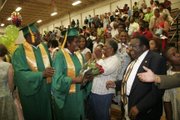
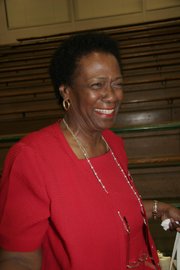

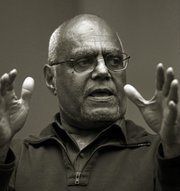
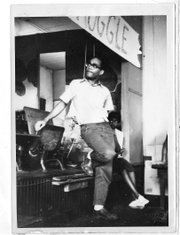
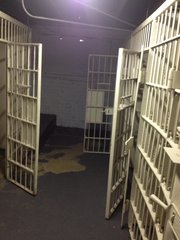

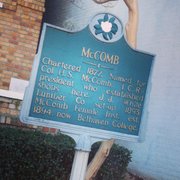

Comments